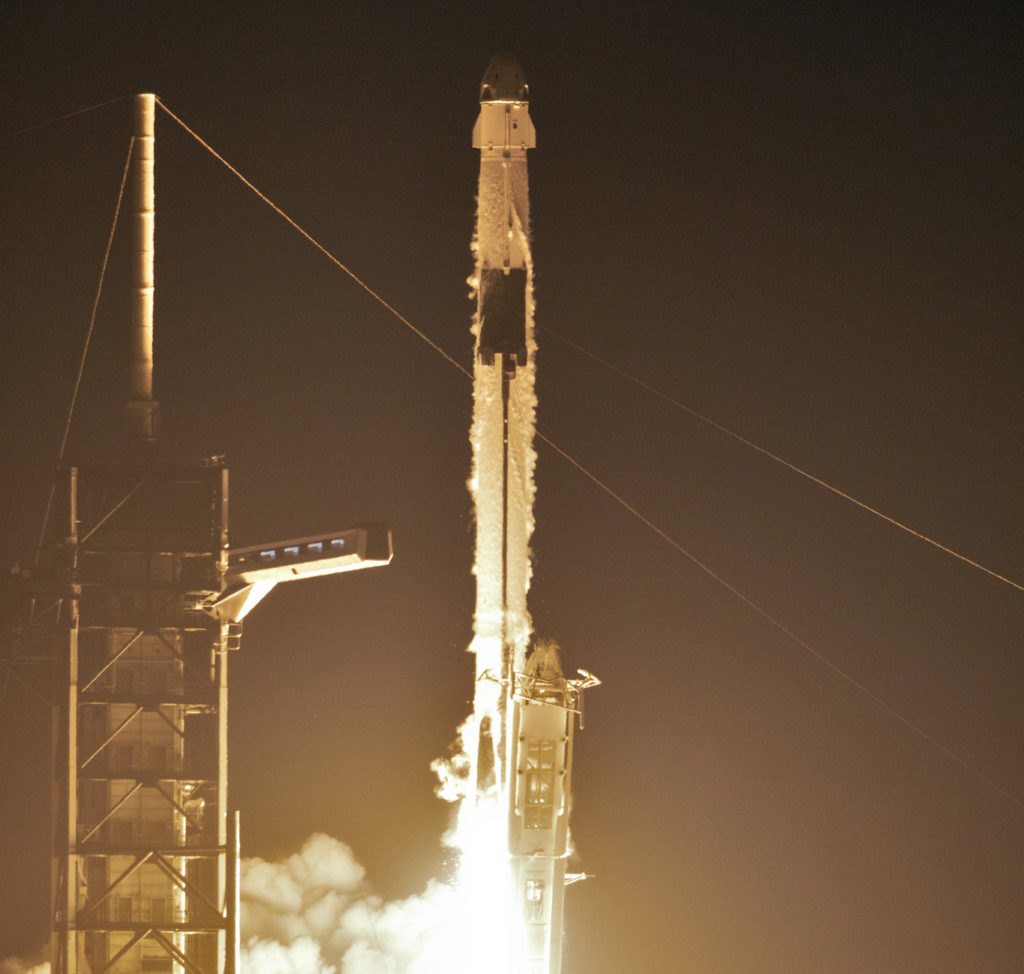
The Demo-1 uncrewed flight test to the International Space Station, SpaceX’s inaugural flight with NASA’s Commercial Crew Program, is underway following the successful launch Saturday morning of the company’s Falcon 9 rocket and Crew Dragon spacecraft. The first-of-its-kind mission, planned to be a full demonstration of the spacecraft and its systems, launched on time at 2:49 a.m. EST from Launch Complex 39A at the agency’s Kennedy Space Center in Florida.
Demo-1 is the first flight test of a space system designed for humans built and operated by a commercial company through a public-private partnership. The mission also marks a significant step toward returning to the nation the capability to launch astronauts on a U.S.-built spacecraft from U.S. soil.
“It’s an exciting evening,” NASA Administrator Jim Bridenstine said after the launch. “What today really represents is a new era in spaceflight. We’re looking forward to being one of many customers in a robust commercial marketplace in low-Earth orbit.”
Elon Musk, SpaceX CEO and lead designer, expressed his thanks to the SpaceX team and reported that the Crew Dragon spacecraft performed as expected through launch and ascent.
“We’re only partway through the mission, but the system thus far has passed an exhaustive set of reviews, and the launch itself,” Musk said. “The launch went as expected and so far everything is nominal.”
In addition to 400 pounds of supplies and equipment, Crew Dragon is carrying Ripley, an anthropomorphic test device outfitted with sensors to gather important data about what an astronaut flying aboard the spacecraft would experience throughout the mission.
NASA and SpaceX will use data from Demo-1 to further prepare for Demo-2, the crewed flight test that will carry NASA astronauts Bob Behnken and Doug Hurley to the International Space Station. NASA will validate the performance of SpaceX’s systems before putting crew on board for the Demo-2 flight, currently targeted for July.
Crew Dragon will carry out a series of phasing maneuvers as it pursues the space station during approach. The spacecraft is scheduled to autonomously dock to the station’s Harmony module forward port tomorrow, March 3, at about 6 a.m. EST. It will remain docked until approximately 2:30 a.m. on Friday, March 8. Crew Dragon is expected to return to Earth with a splashdown in the Atlantic Ocean at approximately 8:45 a.m. on Friday, March 8, a little more than six hours after departing the space station.
For updates throughout the Demo-1 mission, visit www.nasa.gov/station.
